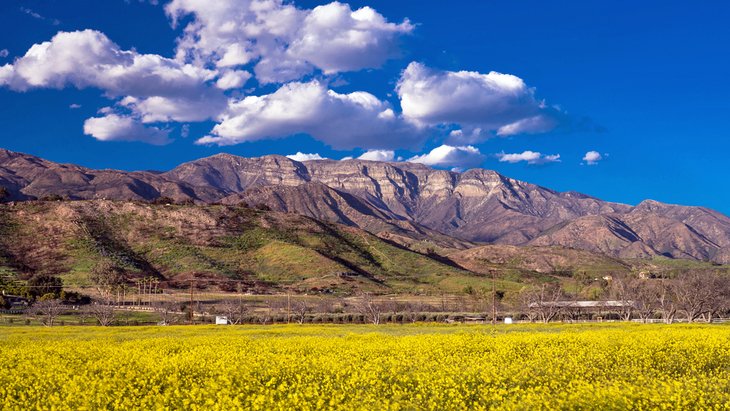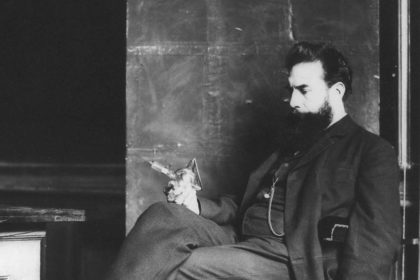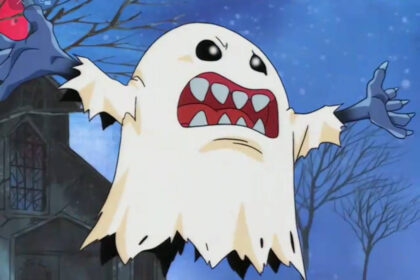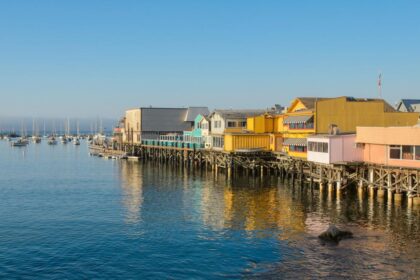Ojai is a city in Ventura County, California. Take a look below for 20 amazing and obscure facts about Ojai, California, United States.
1. Located in the Ojai Valley, it is northwest of Los Angeles and east of Santa Barbara.
2. The valley is part of the east–west trending Western Transverse Ranges and is about 10 miles (16 km) long by 3 miles (5 km) wide and divided into a lower and an upper valley, each of similar size, surrounded by hills and mountains.
3. The population was 7,637 at the 2020 census, up from 7,461 at the 2010 census.
4. Ojai is a tourism destination known for its boutique hotels, recreation opportunities, hiking, and farmers’ market of local organic agriculture.
5. It has small businesses specializing in local and ecologically friendly art, design, and home improvement.
6. Chain stores are prohibited by city ordinance to encourage local small business development and keep the town unique.
7. The name Ojai is derived from the Mexican-era Rancho Ojai, which in turn took its name from the Ventureño Chumash word ‘Awha’y, meaning “Moon”.
8. The city’s self-styled nickname is “Shangri-La” referencing the natural environment of this health and spirituality-focused region as well as the mystical sanctuary of the 1937 film adaptation of James Hilton’s novel Lost Horizon.
9. Ojai sits on the unceded land of the Chumash, a Native American people who inhabited the central and southern coastal regions of California, in portions of what are now Morro Bay in the north to Malibu in the south and the Channel Islands. Before the arrival of European settlers, at least 10,000 Chumash people lived in over 150 independent villages, speaking variations of the same language.
10. Starting in 1769, Spanish soldiers and missionaries arrived to colonize the California coast, Christianize the native population, found military presidios and relocate Chumash people from their villages into Spanish missions.
11. Due to violence and imported disease, Chumash people died at devastating rates under Spanish rule. According to George Tinker, a Native Scholar, “The Native American population of coastal population was reduced by some 90 percent during seventy years under the sole proprietorship of Serra’s mission system.”
12. Whether due to Spanish rule or as part of the California Genocide under the land’s eventual control by the United States, by 1900, the Chumash population had declined to just 200, while current estimates of Chumash people today range from 2,000 to 5,000.
13. The name Ojai is derived from the Ventureño Chumash word ʼawha’y meaning “moon.” A 1905 book on place names in the United States records the name Ojai as being derived from an Indigenous word meaning “nest”, though the specific Indigenous language is not identified.
14. In 1837, Fernando Tico, a Santa Barbara businessman, received the 17,716-acre Rancho Ojai Mexican land grant, which included both the lower and upper Ojai valleys. Tico operated a cattle ranch on the land and moved his large family to an adobe in the lower valley. Tico sold the entire Rancho Ojai in 1853.
15. The rancho changed hands several more times before it was purchased in 1864 by Thomas A. Scott, a Pennsylvania oil and railroad baron. The petroleum exploration of the Ojai Basin was the result of a report of oil seeps (oil springs) along the Sulphur Mountain area.
16. In 1866, Scott’s nephew Thomas Bard used a steam-powered cable-tool drilling rig on the north side of Sulphur Mountain. On May 29, 1867, Ojai No. 6 produced an oil gusher, at a depth of 550 feet, and the Ojai Field eventually produced 10-20 barrels of oil a day. Also in 1866, Leland Stanford’s brother Josiah dug oil tunnels on the south side of Sulphur Mountain, producing 20 barrels a day for the Stanford Brothers refinery in San Francisco.
17. For economic reasons, falling oil prices at the end of the Civil War and cheaper imports from the east, Scott and Stanford ceased oil exploration in the valley area. Thomas Bard then began selling the surface rights to parcels of Rancho Ojai in late 1867. As the president of Unocal, Bard would return in the 1890s to dig about 50 oil tunnels into Sulphur Mountain, which produced until 1998.
18. The town was laid out in 1874 by San Buenaventura businessman R.G. Surdam and named Nordhoff in honor of the writer Charles Nordhoff who had written a book about California titled, California for Health, Pleasure and Residence: A Book for Travelers and Settlers. Most early settlers to the valley had one or more family members who were ill, particularly with respiratory illnesses, and the Ojai Valley developed a reputation for having healthy air quality. Many did get well after moving to the valley.
19. Charles Nordhoff had not visited the Ojai Valley when his book came out in 1873, but made several visits to his namesake town in the early 1880s, and he mentioned the Ojai Valley in the revised 1882 version of his popular book. The discovery of hot springs in Matilija Canyon and subsequent development of hot springs resorts in the late 1800s contributed to the valley’s healing mystique.
20. The public high school in Ojai is Nordhoff High School. The public junior high school, named “Matilija”, formerly served as Nordhoff Union High School and still features large tiles with the initials “NUHS” on the steps of the athletic field.




